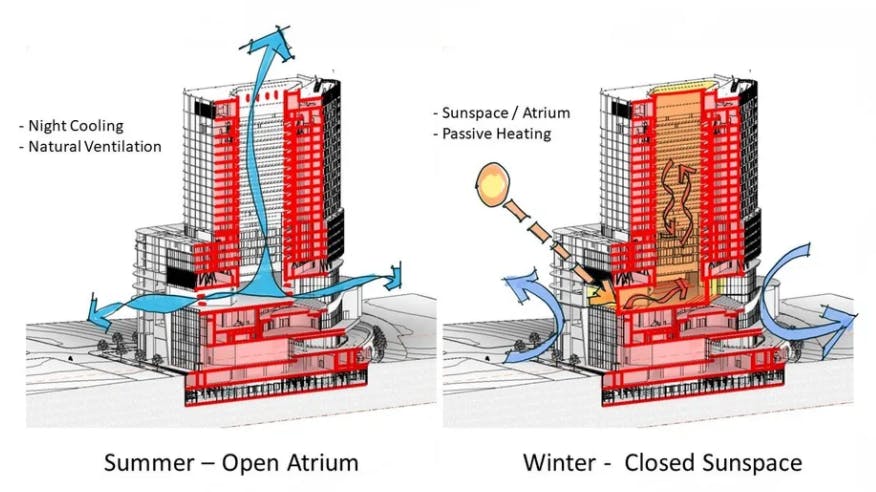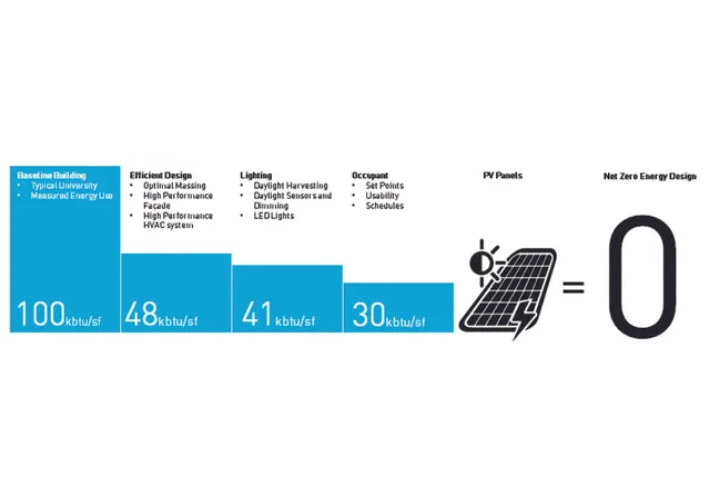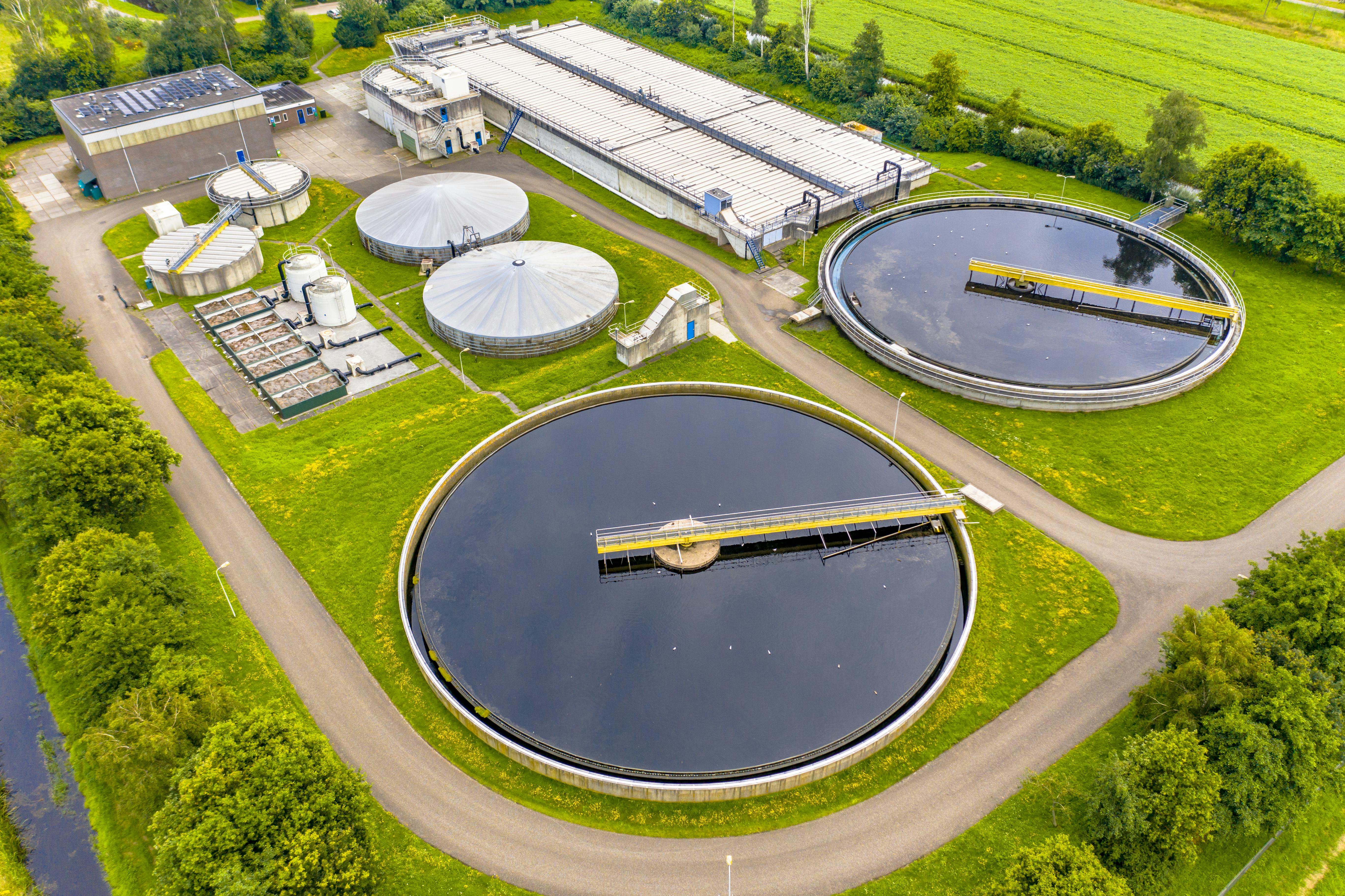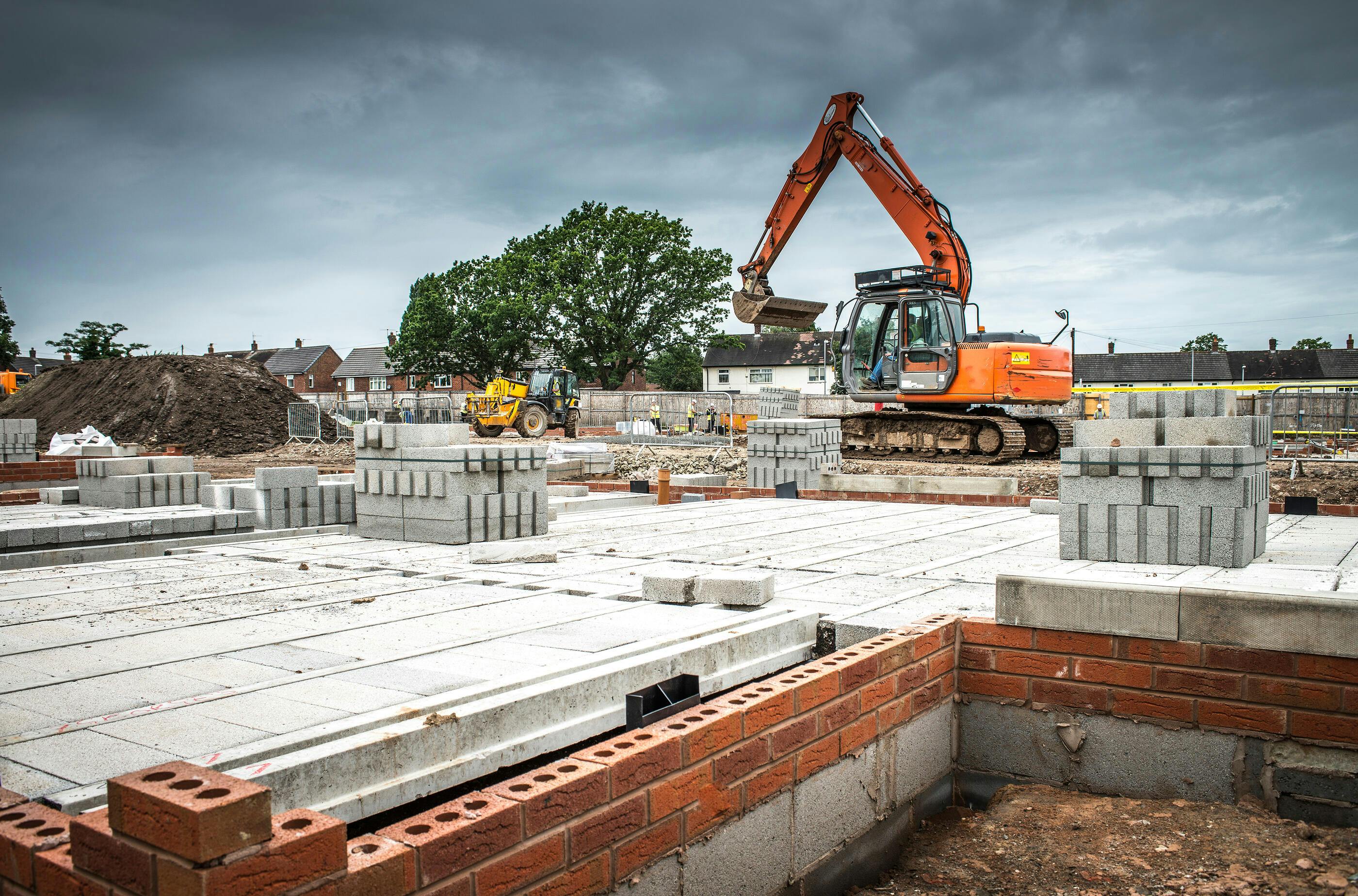Sustainable buildings, or green buildings, are designed and constructed in a way that minimizes their negative impact on the environment while maximizing their efficient use of resources. These buildings are designed to be energy-efficient, water-efficient, and environmentally responsible throughout their entire life cycle, from construction to operation and eventual demolition, and embody a profound harmony between humanity and the natural world.
At the heart of sustainable buildings lies a fundamental principle: the efficient utilization of resources. Green buildings are designed with a deep reverence for energy conservation, employing innovative techniques to minimize consumption.
Here are 5 strategies to utilize natural resources in your designs to achieve high-performance sustainable buildings:
Strategy 1: Passive Design
Passive design is a crucial strategy for sustainable buildings, utilizing natural elements and architectural features to minimize energy consumption and enhance occupant comfort. Some examples of passive design strategies include:
strategic building orientation to optimize solar exposure and minimize heat gain or loss.
Utilizing shading elements like overhangs and louvers to mitigate direct sunlight, and reduce the need for artificial cooling. Natural ventilation principles, such as cross-ventilation and stack effect, enhance indoor air quality and decrease reliance on mechanical systems.
Integration of thermal insulation, high-performance glazing, and thermal mass materials to further improve energy efficiency and thermal comfort.
Passive building design strategies offer benefits such as reduced energy consumption and carbon emission, lower operational costs, improved occupant well-being, and minimized environmental impact. By harmonizing with the environment, passive design represents a sustainable approach that aligns with our quest for a greener future.

Strategy 2: Energy Efficient Systems
Energy efficiency serves as a pivotal strategy in creating sustainable buildings, aiming to minimize energy consumption and environmental impact. By implementing various energy-efficient measures and technologies, architects and designers can optimize building performance while enhancing occupant comfort. Some examples of energy-efficient systems include:
Efficient HVAC systems, incorporating technologies like heat pumps and energy recovery ventilation, ensure optimal temperature regulation and airflow management.
Lighting design plays a significant role as well, with the use of energy-saving fixtures, daylight sensors, and smart controls to reduce electricity usage and maximize natural light.
Selecting energy-efficient appliances and integrating smart building management systems further contribute to energy efficiency.
By leveraging load modeling tools and sustainable building design consultants, designers can simulate and analyze energy usage, identifying opportunities for improvement and refining design choices for optimal energy performance.
The benefits of energy efficiency are substantial, encompassing reduced energy consumption, cost savings, and minimized greenhouse gas emissions. Moreover, energy-efficient design enhances occupant comfort and well-being. By embracing energy efficiency as a core strategy, sustainable buildings pave the way for a greener future while aligning with our environmental goals.

Strategy 3: Renewable Energy
Renewable energy emerges as a transformative force in sustainable building design, revolutionizing our approach to powering buildings. Solar panels convert the sun's rays into clean electricity, while wind turbines harness the breeze's kinetic energy. Geothermal systems tap into the Earth's warmth for efficient heating and cooling.
Incorporating renewable energy systems in buildings not only provides a reliable and clean source of power but also offers numerous benefits. Firstly, it reduces the overall demand for energy from non-renewable sources, decreasing our dependence on fossil fuels that contribute to climate change.
Secondly, by generating electricity on-site, buildings can become more resilient and self-sufficient, less susceptible to disruptions in the power grid. This is particularly crucial in remote areas or during natural disasters when traditional energy sources may be compromised. Furthermore, sustainable buildings equipped with renewable energy systems often experience lower energy costs in the long run, as they are less reliant on fluctuating fossil fuel prices.
By integrating these renewable energy sources, architects create structures that minimize reliance on fossil fuels, reduce carbon emissions, and promote energy self-sufficiency. This visionary strategy harmonizes architectural ingenuity with environmental consciousness, forging a path toward a more sustainable future.

Strategy 4: Water Conservation
Water conservation serves as a vital strategy in building sustainably, aiming to minimize water usage, preserve this finite resource, and promote environmental responsibility.
Water conservation directly contributes to energy conservation through several interconnected factors. Conserving water reduces the energy required for water treatment processes, decreases the energy demand for pumping and transportation, and lowers the energy consumption for water heating. Additionally, by reducing the volume of wastewater, energy-intensive processes for wastewater treatment are minimized. Moreover, conserving water supports the sustainability of water resources crucial for energy production, as energy generation often relies on water sources. Therefore, water conservation plays a significant role in minimizing energy consumption and promoting overall sustainability.
Sustainable buildings can prioritize efficient water management through technologies like low-flow fixtures and water-efficient landscaping. This reduces water consumption, preserves freshwater resources, and helps maintain ecological balance. Additionally, water conservation in buildings leads to energy efficiency and cost savings. By implementing water conservation strategies, buildings become more resilient to water scarcity and contribute to climate change resilience.

Strategy 5: Sustainable Materials
Sustainable materials in construction play a crucial role in reducing the environmental impact of the building industry. These materials are characterized by their low carbon footprint, renewable nature, and recyclability. Incorporating sustainable materials such as responsibly sourced wood, recycled steel, and recycled concrete helps reduce greenhouse gas emissions, conserve natural resources, and minimize waste generation. Additionally, sustainable materials often have improved energy efficiency properties, enhancing the overall performance of buildings.
Using sustainable materials promotes healthier indoor environments. They are often free from harmful chemicals and volatile organic compounds (VOCs), which can have adverse effects on human health. Using eco-friendly insulation, low-emission paints, and flooring made from natural or recycled materials can improve indoor air quality and create healthier living and working spaces.
Additionally, sustainable materials and embodied carbon are interconnected as sustainable materials are specifically chosen to minimize the embodied carbon emissions associated with their production, use, and disposal. By opting for sustainable materials with lower embodied carbon, such as responsibly sourced wood or recycled materials, the construction industry can reduce its overall carbon footprint, mitigate climate change, promote a more sustainable built environment while ensuring the comfort and well-being of building occupants.
By integrating revgen.tool into their workflow, building product manufacturers can effectively market their products based on validated performance data. With the YKK AP and cove.tool integration, architects can conduct critical analysis and gain actionable insights to quickly and easily meet a project’s energy savings and carbon footprint goals.

Why Are Sustainable Building Strategies Important?
The implementation of sustainable building strategies plays a pivotal role in achieving architectural excellence, while also addressing the pressing challenges of energy efficiency, environmental responsibility, and overall performance. By incorporating advanced technologies, strategies, and materials, sustainable buildings not only minimize negative impacts but also deliver numerous benefits.
cove.tool's revgen.tool design.assist reports highlight the distinct advantages of your products, demonstrating their effectiveness and suitability in the actual context of a specific project. This process ensures that your products' unique benefits and performance are communicated clearly and effectively, directly addressing each project's specific needs and challenges.
The cove.tool platform can provide analysis reports by simply providing us with the BIM model or basic project square footage for your key pursuits. These reports are tailored to underscore the competitive advantages of selecting your products, offering a detailed, actionable analysis that highlights product-specific advantages around carbon, energy savings, and cost.
